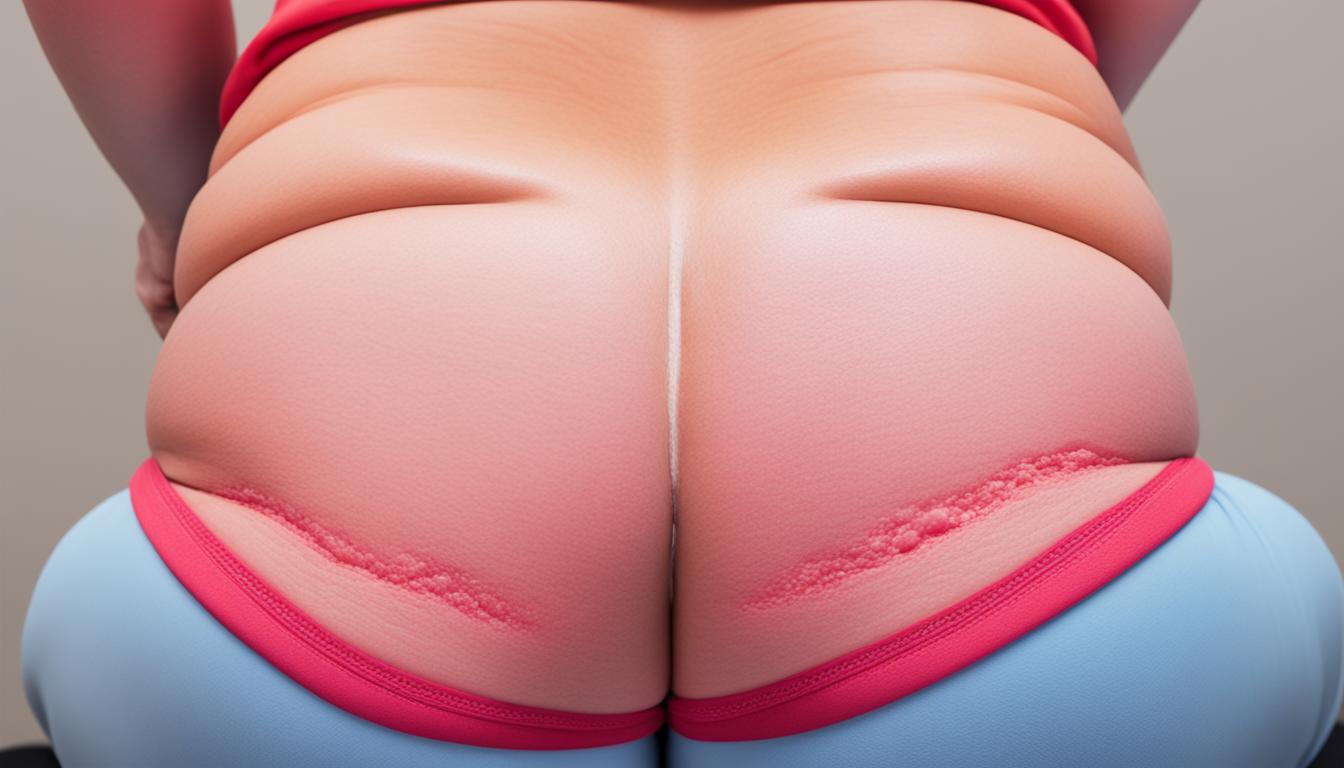Pilonidal dimple disease mainly affects young people, especially men. It can lead to abscesses, spots where pus collects, and draining sinus tracts, narrow tunnels under the skin. This condition often makes people feel weak. It’s thought to happen when hair goes into the skin. But we are not completely sure why it occurs. This problem shows up as a pilonidal sinus, a small tunnel that forms near the tailbone. It causes infections to happen again, abscesses, cellulitis, and fistulae. Sometimes, the infection doesn’t go away and can be hard to diagnose. In very rare cases, the causing infection can involve tuberculosis or actinomycosis. Diagnosing tuberculosis in pilonidal sinus disease needs a careful look and the use of new tests. Doctors treat this issue with a mix of medicine and surgery to heal the sinuses.
Key Takeaways:
- Pilonidal dimple disease impacts young individuals, usually males. It brings about abscesses, draining sinus tracts, and moderate debility.
- The illness showcases as a pilonidal sinus near the tailbone and can cause recurrent infections, abscesses, cellulitis, and fistulae.
- Diagnosing tuberculosis in pilonidal sinus disease is complex. It demands a keen eye and innovative diagnostic tools.
- Treatment for pilonidal dimple disease involves using antitubercular medicine and surgery to fix the sinuses.
- More research is required to know the exact reasons behind pilonidal dimple disease. Also, to check out new treatments like stem cell therapy.
Causes and Symptoms of Pilonidal Dimple Disease
Pilonidal dimple disease is common and can be painful. It’s good to know what causes this disease and its symptoms to help handle it better.
Causes of Pilonidal Dimple Disease
Sitting for a long time, wearing tight clothes, or doing activities that impact your lower back can cause pilonidal dimple disease.
Poor hygiene increases the risk. It leads to hair, dirt, and germs collecting in the area. This can cause infection and swelling.
During adolescence, there’s more hair growth. This can cause hair to grow under the skin, creating cysts or sinuses.
For some, genetics play a role in getting this disease. They might be more likely to develop it.
Symptoms of Pilonidal Dimple Disease
People with this disease may feel different symptoms. But, they often feel:
- Pain and Discomfort: Pain is common in the lower back area. It can be worse when moving or sitting.
- Redness and Inflammation: The skin around the dimple can get red, sore, and swollen.
- Drainage of Pus or Blood: Infected sinuses may leak pus or blood.
- Fever: If the infection is serious, a fever might develop as the body fights it.
Severity and occurrence of symptoms vary. They might happen now and then or all the time.
If you think you have this disease, see a doctor. They can give you the right diagnosis and treatment.
Stem Cell Therapy for Pilonidal Dimple Disease
Stem cell therapy shows promise in treating pilonidal dimple disease. This condition can be very painful and limit movement. The therapy uses stem cells’ ability to regenerate to heal the area and improve movement.
Studies indicate that injecting stem cells can enhance muscle strength and control. Patients see better bowel and bladder control after receiving this therapy. Research on related conditions like spina bifida point to successful outcomes.
For this therapy, specialists use stem cells from umbilical cords. These include both umbilical cord-derived mesenchymal stem cells (UCMSCs) and umbilical cord blood stem cells (UCBSCs). They inject these cells into the damaged area. Physical therapy is often used alongside the injections to guide the stem cells to heal the needed spots.
More studies are needed to understand the full benefits of stem cell therapy for pilonidal dimple disease. Despite this, the therapy brings hope to those suffering from the condition. Its ability to regenerate damaged tissue is a step forward in treating pilonidal dimple disease.
FAQ
Q: What is pilonidal dimple disease?
A: Pilonidal dimple disease affects young people, especially men. It can lead to abscesses, draining sinus tracts, and cause moderate debility. This issue happens when hair grows under the skin, forming sinuses in the lower back.
Q: What are the symptoms and causes of pilonidal dimple disease?
A: The signs of this disease are pain and discomfort. You might notice red, swollen skin with pus or blood drainage. Some people also get a fever. The problem starts because of tight clothing, not keeping clean, and too much hair.
Q: How is pilonidal dimple disease diagnosed?
A: To find out if you have it, a doctor will check the area. They might need to do an ultrasound or MRI to see how bad it is. This helps them figure out the best way to treat it.
Q: What is stem cell therapy and how is it related to pilonidal dimple disease?
A: Stem cell therapy offers a new way to treat pilonidal dimple disease. It uses regenerative cells. These cells are injected into the wound to help it heal. Patients have seen improvements, like being able to do more physical activities and better control over their bowel and bladder.

